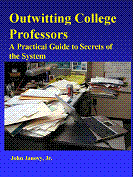Papers in the Biological Sciences

John J. Janovy, Jr. Publications
Document Type
Article
Date of this Version
4-2004
Abstract
To complete their life cycle, gordiids must make a transition from aquatic to terrestrial environments. However, epibenthic aquatic larvae and their terrestrial definitive hosts do not overlap in habitat. This has led many investigators to suggest that infections are acquired through the ingestion of insects, which become infected as aquatic larvae with gordiid cysts and subsequently carry gordiids to land. This proposed life cycle was experimentally tested using three common American species of gordiids: Gordius robustus, Paragordius varius, and Chordodes morgani. Cysts of all three species survived the metamorphosis of Tanytarsus sp., a midge. Subsequent infection trials of definitive hosts with cysts from imagos show that cysts surviving the metamorphosis of insects remained viable and free of host internal defense reaction. Data from naturally infected mayflies, Callibaetus sp., show that encystment and survival of gordiids within aquatic insects occur in nature. Paratenesis between paratenic hosts was also shown to be possible in these three species. This latter finding appears to indicate that cysts formed in spurious paratenic hosts may not be lost but may eventually transfer to normal paratenic hosts.


Comments
Published in the Journal of Parasitology (April 2004) 90(2): 240-244. Copyright 2004, the American Society of Parasitologists. Used by permission.